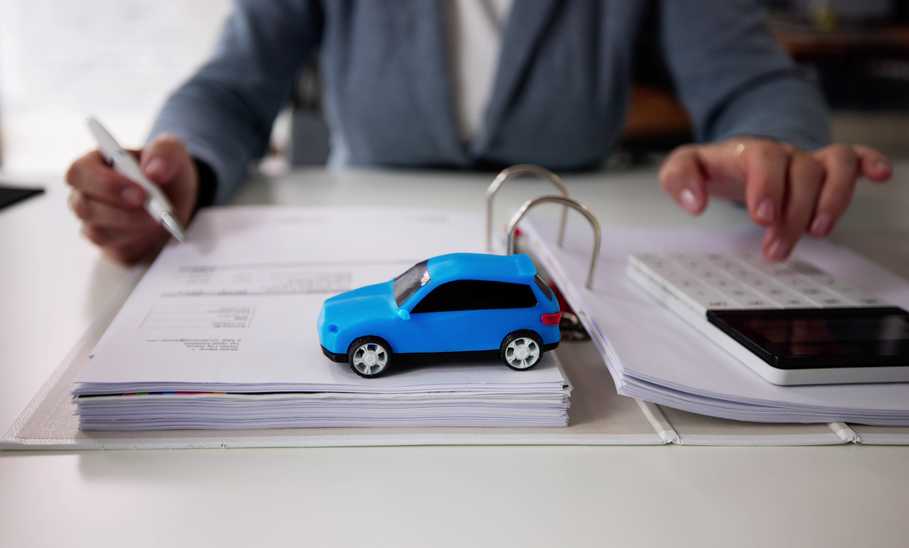What is a Car Insurance Deductible?

Our evaluations and opinions are not influenced by our advertising relationships, but we may earn a commission from our partners’ links. This content is created by TIME Stamped, under TIME’s direction and produced in accordance with TIME’s editorial guidelines and overseen by TIME’s editorial staff. Learn more about it.
Auto insurance is an important—and in most states legally required—product if you plan to own or get behind the wheel of a vehicle. This coverage is intended to protect others if you are liable for an accident, and it can also extend select coverage to you, your passengers, and your vehicle.
When buying auto insurance coverage, there are several important decisions to make: how much coverage you want, what sort of protection you need, and what you want your deductible to be. Read on to learn what a car insurance deductible is, how it affects your premiums, and what the right deductible is for you.
A car insurance deductible is the initial portion of a covered claim amount that you, as the policy owner, will need to pay out of pocket before your insurance company will step in to cover the rest. So, if you file a collision claim that results in $5,000 in repairs, and you have a $600 deductible, your carrier will cover $4,400 of that repair bill. The remaining $600 is your responsibility.
Deductibles may apply to comprehensive coverage, collision coverage, and even auxiliary coverage, such as windshield protection, and the deductible itself may vary by coverage type. Your deductible amount is set at the time that you purchase your policy and must be paid each time you make a new claim against your coverage. In some cases you may even be required to pay your deductible more than once for the same incident.
In general you are not required to pay a deductible if a liability-only claim is filed against you for an at-fault accident. This means that if you are responsible for an accident and your auto insurance pays only for damages and injuries to the other driver, a deductible isn’t necessary.
The deductibles from which you can choose will depend on factors such as your insurance company, the type of coverage you buy, your claims history, and how much you want to spend. While other types of insurance coverage, such as homeowner’s insurance, may have a percentage-based deductible, auto insurance deductibles are almost always a flat dollar amount.
Some carriers will allow for $0 deductibles, while others have options that start at $100 and go to $2,000. You’ll find that your car insurance deductible options are often in the range of $500, $750, or $1,000. You’ll want to ask your carrier what your options are and how each deductible will affect your premiums.
You will encounter a deductible if you file a claim against your own insurance company for damages that you incur. This can happen if you’re found at fault for an accident or if damages occur and there’s not another driver to blame (such as a hit-and-run or single-car accident).
Some common types of car insurance deductibles include those that apply to:
If your policy offers windshield coverage, you may also have a separate deductible for that type of claim.
Liability auto insurance is not subject to a deductible. This means that you won’t need to pay a deductible if you’re at fault for an accident and your carrier pays for damages that another driver incurs. You also aren’t required to pay a deductible if another driver is at fault and you file a claim against their liability insurance coverage.
In some cases you may want to file a claim with your own insurance company, even if you’re not the at-fault driver. This allows your carrier to get the process started and offer you a rental car, car repairs, medpay coverage, and more while the insurance companies iron out the facts. In this case you may be asked to pay your deductible up front for a not-at-fault accident.
Once the other driver is found to be at fault, your own insurance company will go after their policy for coverage. It will then refund your deductible to you.
Deductibles are one way that insurance companies share risk with their customers. Because of this, the deductibles you choose can influence your policy’s premiums.
In general, the higher the deductible you choose, the lower your premiums will be. As you are accepting a higher up-front financial risk, your carrier is will reduce your premiums to reflect that risk.
Conversely, choosing a low deductible will usually result in higher policy premiums. As you are taking on less of the financial burden and putting more risk on your carrier, it will charge you more for the extra protection.
It can be tempting to choose a very low deductible when buying a policy. After all, no one wants to be stuck with a hefty out-of-pocket expense right after an accident or unexpected damage. However, it’s important to weigh your options and choose the deductible that makes the most sense overall.
A high deductible will usually result in lower premiums, but you need to be sure you can cover that cost when the unexpected does occur. If you don’t have the money for that set aside, you may find yourself in a tough spot when it comes time to pick up your car from the auto body shop and need to pay your deductible.
A low deductible can be a financial relief, minimizing your own coverage expenses. Just know that you’ll pay more each month in premiums for going this route.
Before settling on a deductible, be sure to play around with your carrier’s online policy-builder tool (if offered) or speak with an agent to explore your options. This can show you exactly how much you’ll save by raising your premiums, and you can decide where that perfect balance lies for you and your family.
Some of the best car insurance companies offer diminishing or disappearing deductibles as a reward for safe drivers and customers who go a prolonged period of time without filing a claim. This usually means that each year you don’t file a claim or get a moving violation, your deductible will be reduced by a certain dollar amount (sometimes $50 or $100 per year).
Go long enough and your deductible will vanish to $0, but without a negative impact on your premiums. If and when you need to file a claim, you’ll enjoy a reduced (or zeroed) out-of-pocket cost.
Liberty Mutual has another approach, called a “Deductible Fund.” Drivers pay $30 per year into this fund; in turn, they will see a $100 drop in their deductible each year that they go without a claim or traffic violation. If a claim is filed, Liberty Mutual will contribute toward this fund to cover a specific portion of the deductible and lower drivers’ out-of-pocket expenses.
There are certain times when you are not required to pay a deductible on your car insurance policy. These include when you:
Auto insurance is a legally required product (in most states) that financially protects you and all the other drivers on the road. If you ever need to file a claim against your own policy, you can expect to pay a portion of those costs in the form of a deductible. While choosing a lower deductible will limit your out-of-pocket expenses, it can often result in higher policy premiums.
If you are an at-fault driver and found liable for hitting another car, you are only required to pay a deductible if you are also filing a claim for your own vehicle’s repairs. If you only have liability coverage (which protects the other driver) or don’t intend to fix your own vehicle (via collision or comprehensive coverage), a deductible is not required.
A $2,000 deductible is on the higher end of your options when buying car insurance. Many carriers offer deductibles as low as $100, limiting your out-of-pocket expenses following an accident or other damages. By choosing a higher deductible, such as $2,000, you may be able to drastically reduce your policy’s premiums.
If your covered damages are more than your policy’s deductible, your carrier will step in to cover the difference. For example, if you file a claim for $750 in hail damage, but your deductible is $1,000, your carrier won’t cover anything. If you have a $200 deductible, though, your carrier will cover $550 of that repair bill.
Unless another driver is found at fault or you have a vanishing deductible, your auto insurance carrier will not make any payments until you pay your up-front deductible. Any covered expenses beyond that deductible will be paid by the insurance company, up to your policy’s coverage limit.
Many carriers will require you to pay your deductible at the time you file a claim against your coverage. If you’re unable to pay your deductible at this time, you may not be allowed to move forward with the claim or repairs might not be approved.
Some other carriers may allow you to pay your deductible when it comes time to pick up your vehicle from the repair shop. If you’re unable to pay at that time, you likely won’t be allowed to take possession of your vehicle. You may also be charged storage fees from the shop and, if you have a rental car, rental fees for the time after your vehicle is repaired but not picked up.
The information presented here is created by TIME Stamped and overseen by TIME editorial staff. To learn more, see our About Us page.




